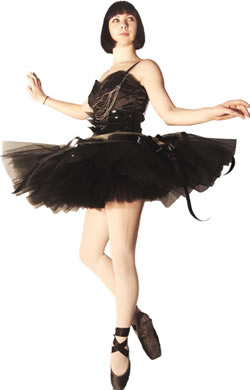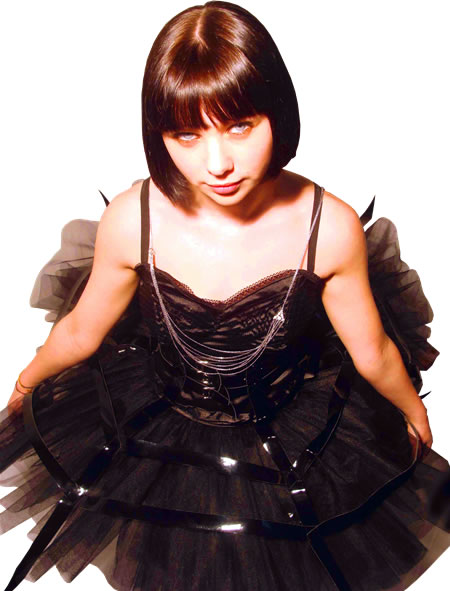Ballet tutu

Robyn Daly
Wellington High School
Year 13 Fashion and Textiles Technology
Teacher: Kylie Merrick
Workbook gallery
Robyn's challenge in designing a ballet tutu was to reflect her client's personality and style, "a hard-edged, gothic look", while retaining the traditional aspects of the costume. Timing was crucial as her client was auditioning for the Royal New Zealand Ballet School, so it had to be completed by the end of August.
Robyn researched the designer styles her client favoured, and found the inspiration she was looking for in the work of Dunedin-based design company NomD. "Their look was perfect for the tutu because it gives an innocent, clean-cut dress a striking gothic twist, which was the look I was after," she says. She also looked at the materials used in various designer fashion lines and how they might be incorporated into a tutu.
Robyn checked the regulations regarding audition apparel and discussed functionality with her client – the tutu had to allow for movement and comfort. She sketched some concept designs to show her client and they decided on a black tutu featuring patent leather, metal studs, chains and PVC tape, as well as more conventional and traditional fabrics such as lycra, powermesh and tulle.
Robyn visited the assistant wardrobe supervisor at the Royal New Zealand ballet and discussed the complex construction and pattern-making skills required for ballet costuming. As well as fabric samples, she was given a sample 'knickers piece' (the foundation for the tutu and bodice sections) on which to base her pattern. She adjusted a standard commercial bodice pattern to suit her design.
The 'knickers piece' was made in satin lycra as was the bodice, which Robyn edged in lace and finished with a three-way belt in patent leather, metal buckles and chain necklaces. The skirt was made in tulle and decorated with a spider-web pattern in PVC tape, studded with rows of 'black pearls'.
Making mock-ups of the bodice and knickers proved its worth, when Robyn realised the knickers weren't stretching as the design required so had to make the piece in another, more stretchy lycra. She had made the bodice mock-up from black fabric scraps and, with non-negotiable time constraints, used this as the bodice lining because it was in a suitable material and had already been adjusted to fit perfectly.
Before starting work on her final outcome Robyn made samples of the different stitching, to ensure the seams wouldn't pop when her client was dancing. She says the trickiest sewing was fitting the tulle on to the skirt – twelve metres of fabric in ten layers made a voluminous bundle, deliberately made even more so by sewing the final three layers on upside down. Robyn adds that sewing the patent leather was harder than the other fabrics but one broken needle later it was successfully accomplished.
Robyn and her client were delighted with the outcome, and both felt that it had exceeded the initial brief. "I love the look and fit of the tutu," her client says. "It's exactly what I had wanted and better. The attention to detail makes it all the more personalised and unique – it's great."
Robyn says she is happy that the tutu fitted perfectly, and that the thorough construction combined with some top-quality materials means it should last a lifetime. What's more, her client was accepted for the ballet school!
Robyn was awarded First in Fashion Design Technology at her school prize-giving and is now studying for a degree in Fashion at Massey University School of Design in Wellington.
Teacher comment
The tutu and the whole outfit that Robyn created are visually stunning. The quality of the construction was to a very high standard and very well thought through in a logical and methodical way. Her planning, preparation and testing of materials and techniques prior to making the final one-off product ensured a superior solution. Robyn considered all possibilities and how the solution would be put under specific stressful conditions with movement of the body when it was used for practice and performance. The design was unique and very in keeping with the client's personal style. The technological practice that Robyn undertook was fantastic, very independent, and resulted in a highly successful end product.
Robyn's project workbook gallery







